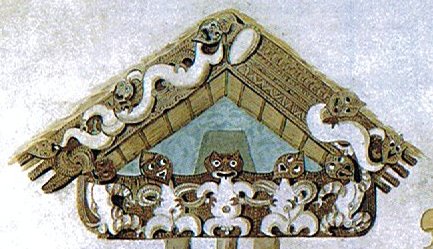|
The general shape of the two 'Sunday' glyphs (Aa2-13 and Aa2-20) could be the reason for the extra little sign at bottom left in Aa2-20 - it could be a way to draw attention to the similarity between these two glyphs:
Glyph number 12 (counted from Aa2-2) can be read as 2 * 12 = 24. Alternatively it can be counted from Aa2-1 as glyph number 13 and result in 2 * 13 = 26. Both numbers indicate measures for Sun. Aa2-20 could refer to Moon in several ways. Not only is 2 * 20 = 400 a number for a cycle based on Moon but she is characterized also by 2 (coming in 2nd place after spring sun). Furthermore, the Easter Islanders may have counted the nights of the Moon only up to 20. If the 18th station (Pua Katiki) represents the apex and final of spring sun, then there could be a gap in time until the arrival of the 26th station (Oromanga), where the ruler should reside.
... The dream soul went to the other side of the mountain Hau Epa. As soon as the dream soul looked around, she saw the sand (beach), which was very white and light. She remained there and explored everything. After she had looked around carefully, the dream soul of Hau Maka said, 'Ah! This is the place that will serve as a residence for the king. She named the place 'Oromanga A Hau Maka O Hiva' and also named the neighboring bay 'Hanga Moria One A Hau Maka O Hiva' ... |
